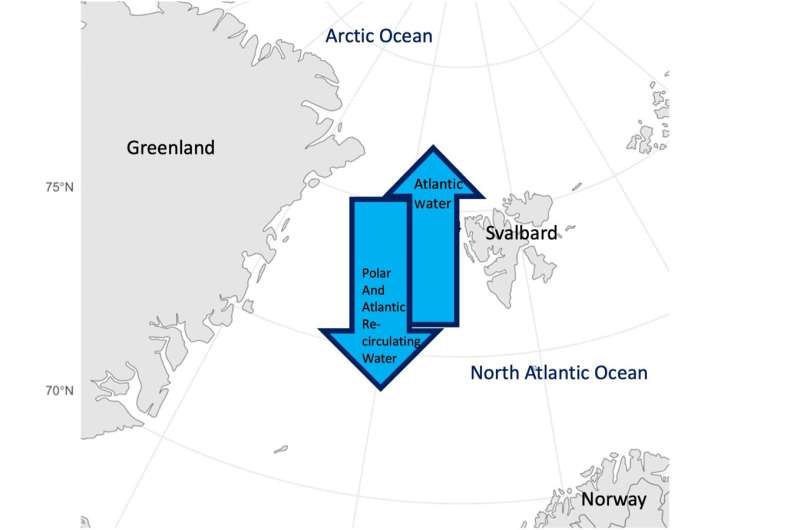This article has been reviewed according to Science X's editorial process and policies. Editors have highlighted the following attributes while ensuring the content's credibility:
fact-checked
peer-reviewed publication
trusted source
proofread
PFAS flow equally between Arctic Ocean and Atlantic Ocean, study finds

The frigid Arctic Ocean is far removed from the places most people live, but even so, "forever chemicals" reach this remote landscape. Now, research in Environmental Science & Technology Letters suggests that per- and polyfluoroalkyl substances (PFAS) won't stay there indefinitely. Instead, they are transported in a feedback loop, with the Arctic Ocean potentially exporting as many PFAS to the North Atlantic Ocean as it receives, circulating the compounds around the world.
To get to the Arctic Ocean, some PFAS hitch a ride in the air and fall onto the ocean's surface, but others enter from adjacent oceans. The potential impact of these compounds on marine organisms depends on which PFAS are present and how many, which is ever-changing as water flows between the Arctic Ocean and the North Atlantic Ocean.
These waterbodies are connected by the Fram Strait, which sits to the northeast of Greenland near the Svalbard archipelago. Warm water travels north on the eastern side of the strait, and cold water flows south along the western side, providing a dynamic gateway for PFAS transportation.
Rainer Lohmann and colleagues wanted to track the movement of PFAS in this region and identify how water circulation influences the mix of contaminants in the Arctic Ocean. The researchers deployed passive sampling systems, which took up PFAS into a sorbent-filled microporous membrane from water as it flowed past. They put the systems at three locations in the Fram Strait, and at four depths in each location. After a year, the team retrieved the systems and measured the collected PFAS using liquid chromatography-mass spectrometry.
The researchers overserved that:
- Ten PFAS were detected in at least one passive sampler, however, one substance detected in the area by previous research teams wasn't among them.
- Two compounds known as PFOA and PFOS, which are being phased out, were present at the highest levels. Newer, short-chain PFAS were also routinely present.
- Surprisingly, several PFAS were found in water below 3,000 feet deep. The team suggests that these compounds could have gotten there by attaching to particles as they fell to the seafloor.
The team calculated the amounts of PFAS flowing in each direction through the Fram Strait. Their data showed that in one year, around 123 tons traveled into the Arctic Ocean and about 110 tons moved into the Atlantic Ocean. According to the researchers, these values are the largest of any pollutant reported in the strait, demonstrating how significant the back-and-forth circulation of PFAS is in the Arctic Ocean.
More information: Passive Sampler Derived Profiles and Mass Flows of Perfluorinated Alkyl Substances (PFASs) across the Fram Strait in the North Atlantic, Environmental Science & Technology Letters (2024). DOI: 10.1021/acs.estlett.3c00835
Journal information: Environmental Science & Technology Letters
Provided by American Chemical Society





















